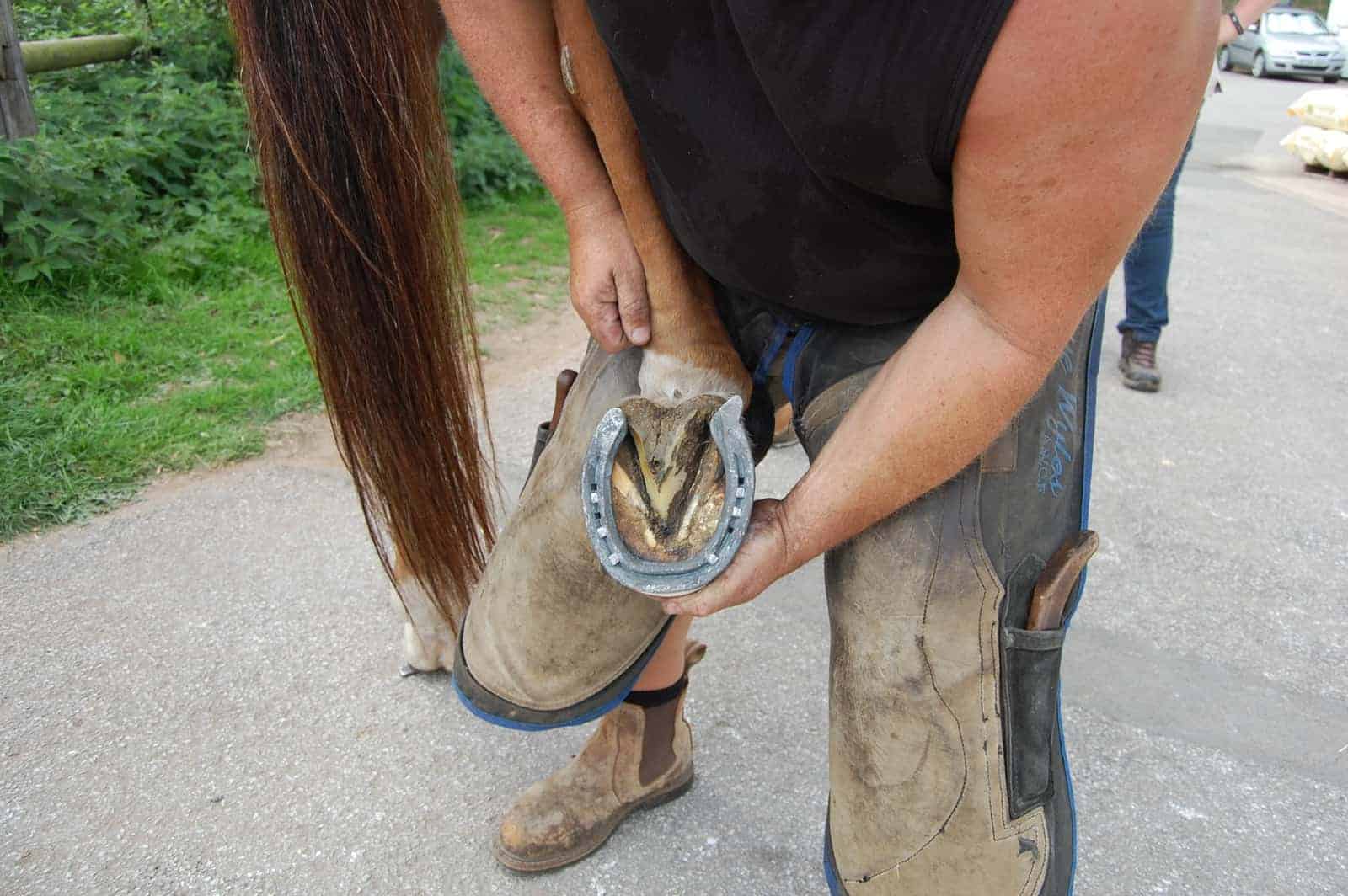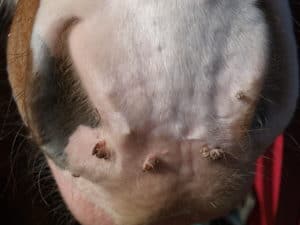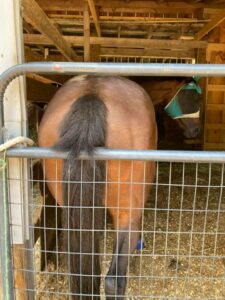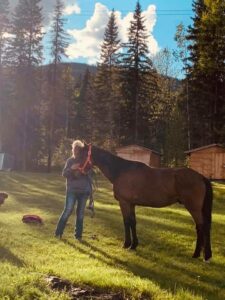A Day at an Equine Practice Abroad
Spend the day at Pool House Equine Clinic in Litchfield, United Kingdom.
- Topics: Slideshow
Share
ADVERTISEMENT
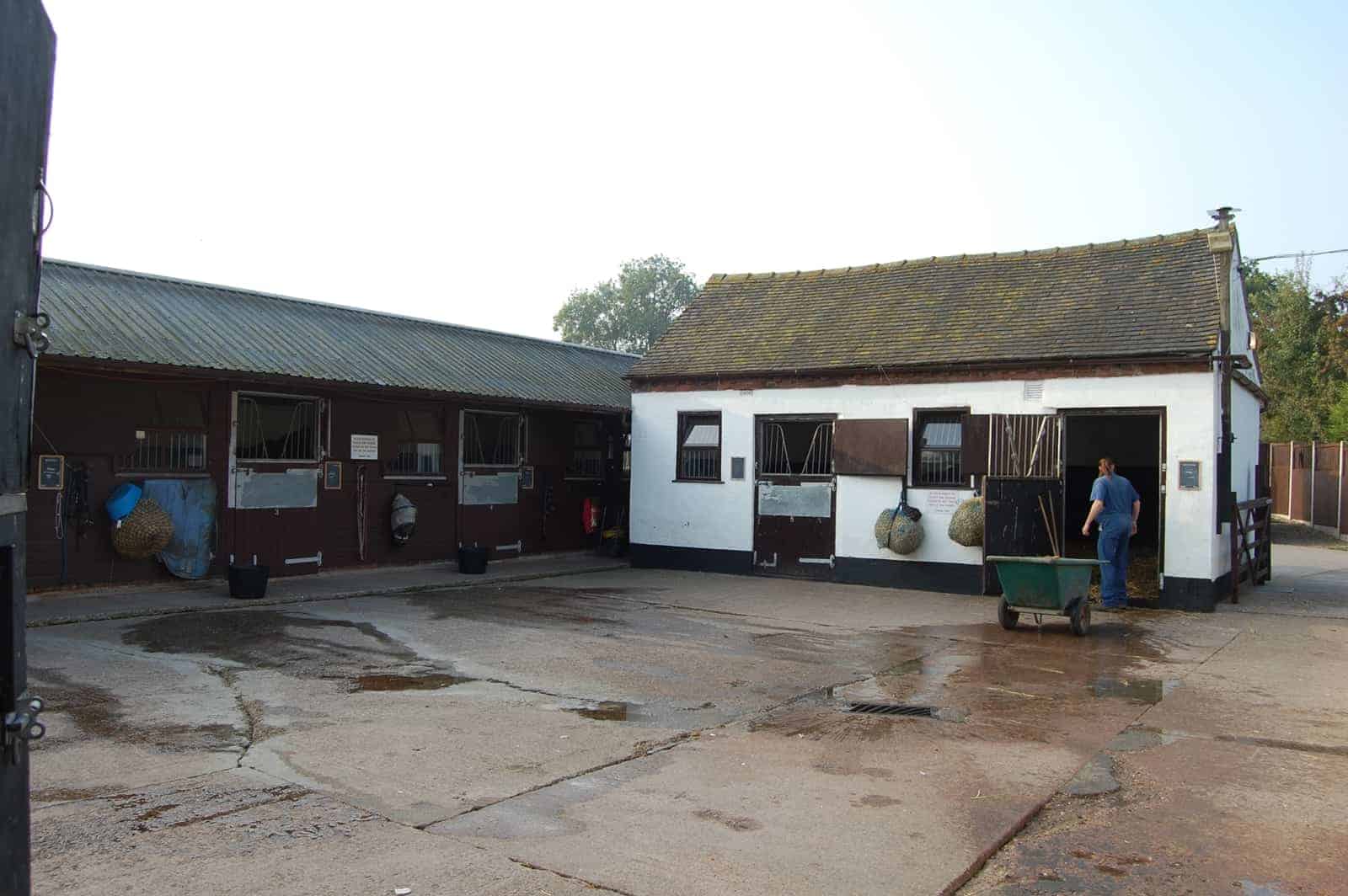
Pool House Equine Clinic
The day dawns bright at Pool House, as staff clean horses' boxes (better known stateside as stalls) from the night before. | Photo: Erica Larson, News Editor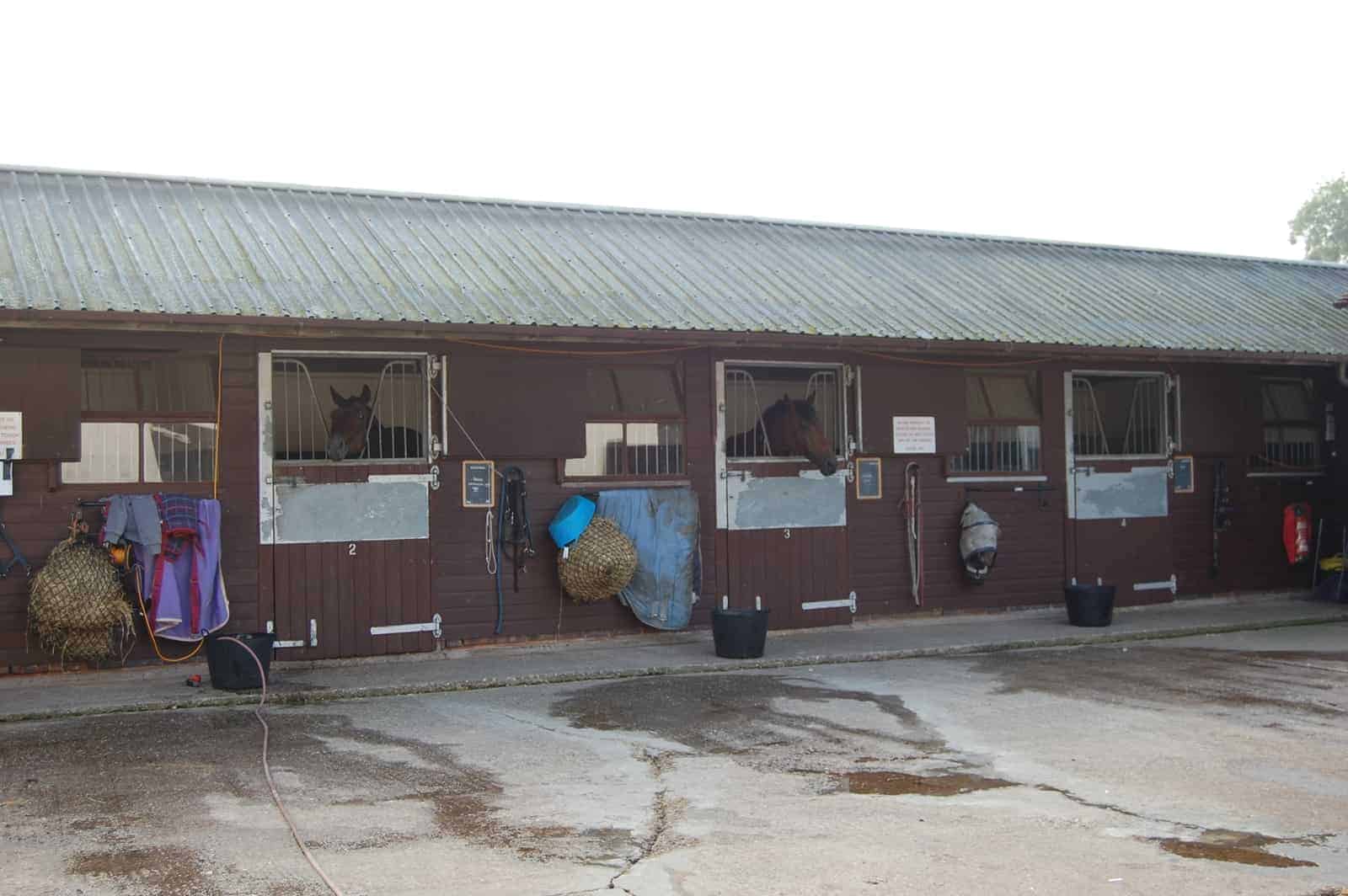
Patients at Pool House
Patients wait in their boxes for their turns. | Photo: Erica Larson, News Editor
Surgical Patient
The first surgical patient of the day is lifted into the recovery room following a successful procedure. | Photo: Erica Larson, News Editor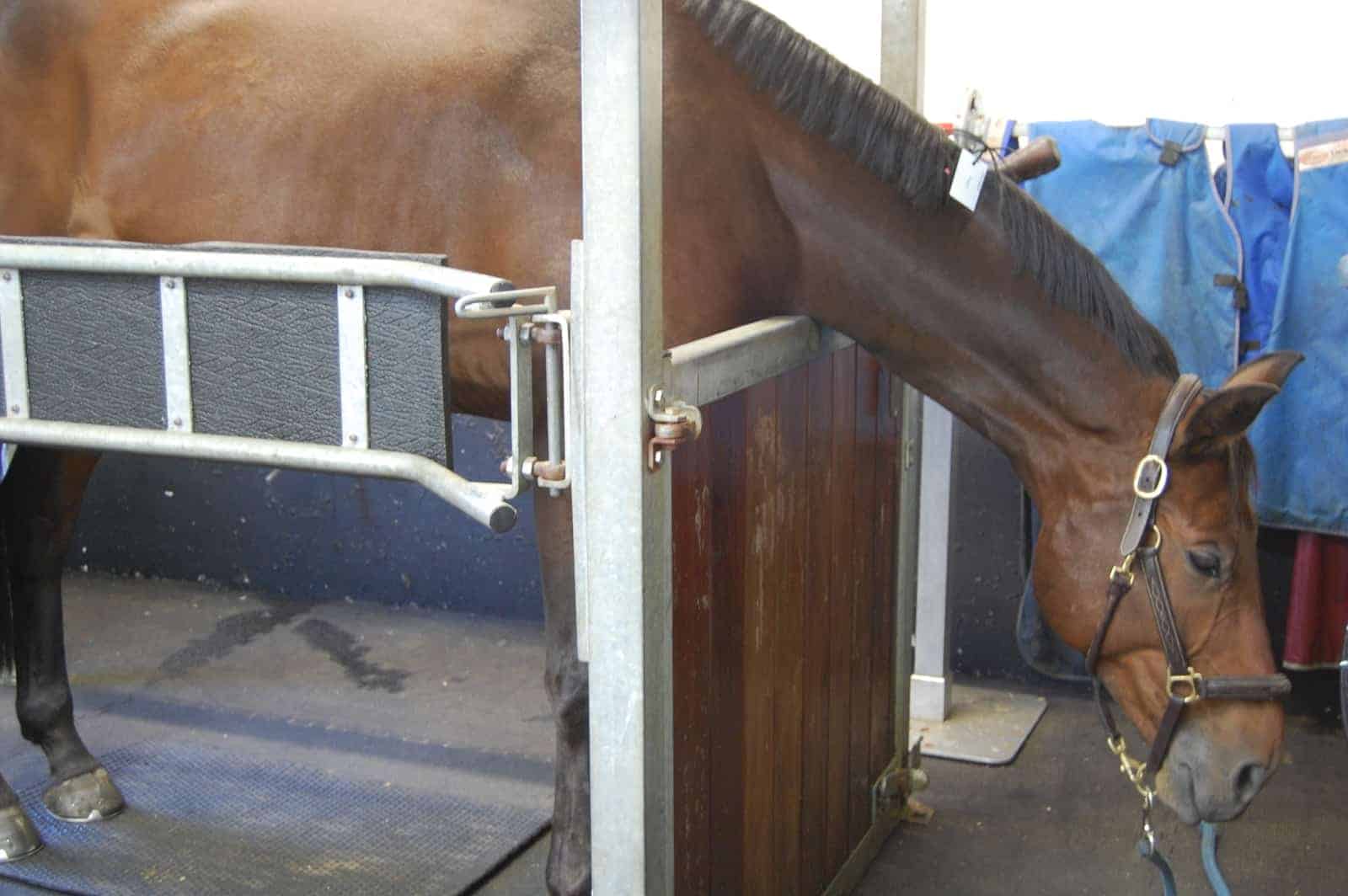
Waiting for Gastroscopy
This sleepy horse awaits his gastroscopy to evaluate the outcome of his ulcer treatment. | Photo: Erica Larson, News Editor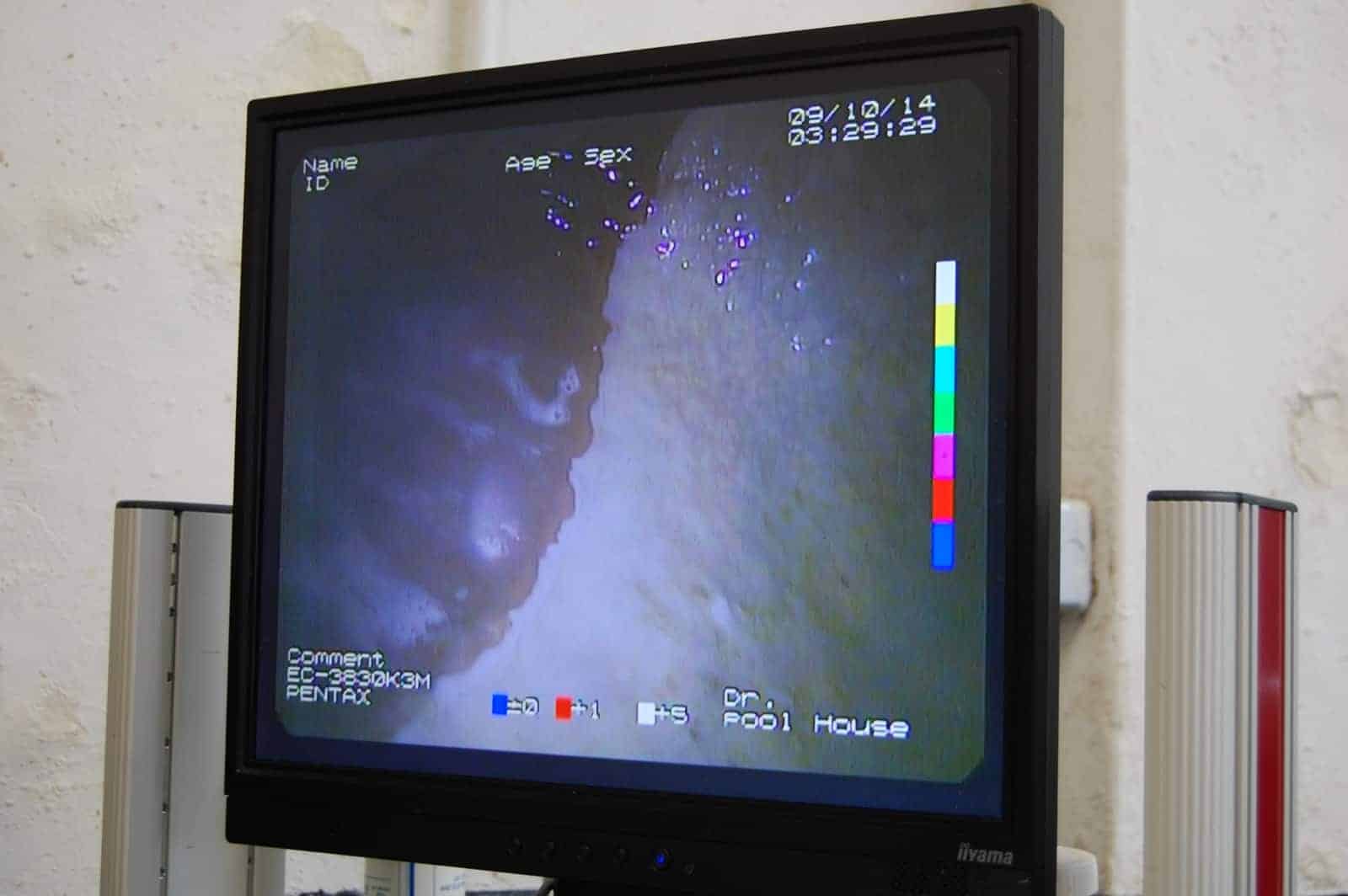
Gastroscopy Results
The results are good, as his ulcers have completely cleared up. | Photo: Erica Larson, News Editor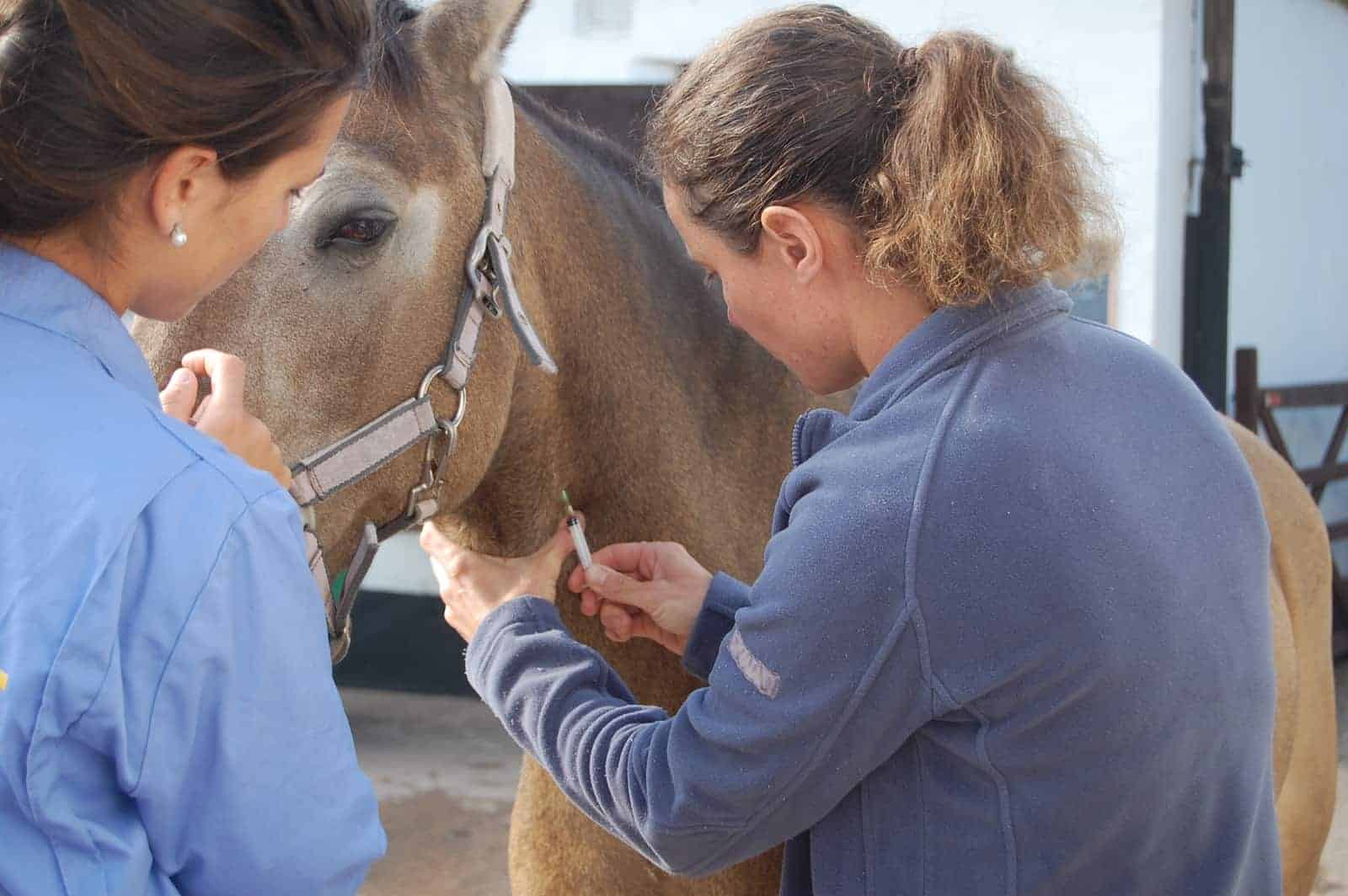
Sedating the Patient
Dr. Renske van der Rijt sedates her next gastroscopy patient, who's presented with lethargy. | Photo: Erica Larson, News Editor
Gastroscopy Results: Lesions
These small lesions likely aren't the cause of this pony's lethargic demeanor, so the staff will keep looking for the culprit. | Photo: Erica Larson, News Editor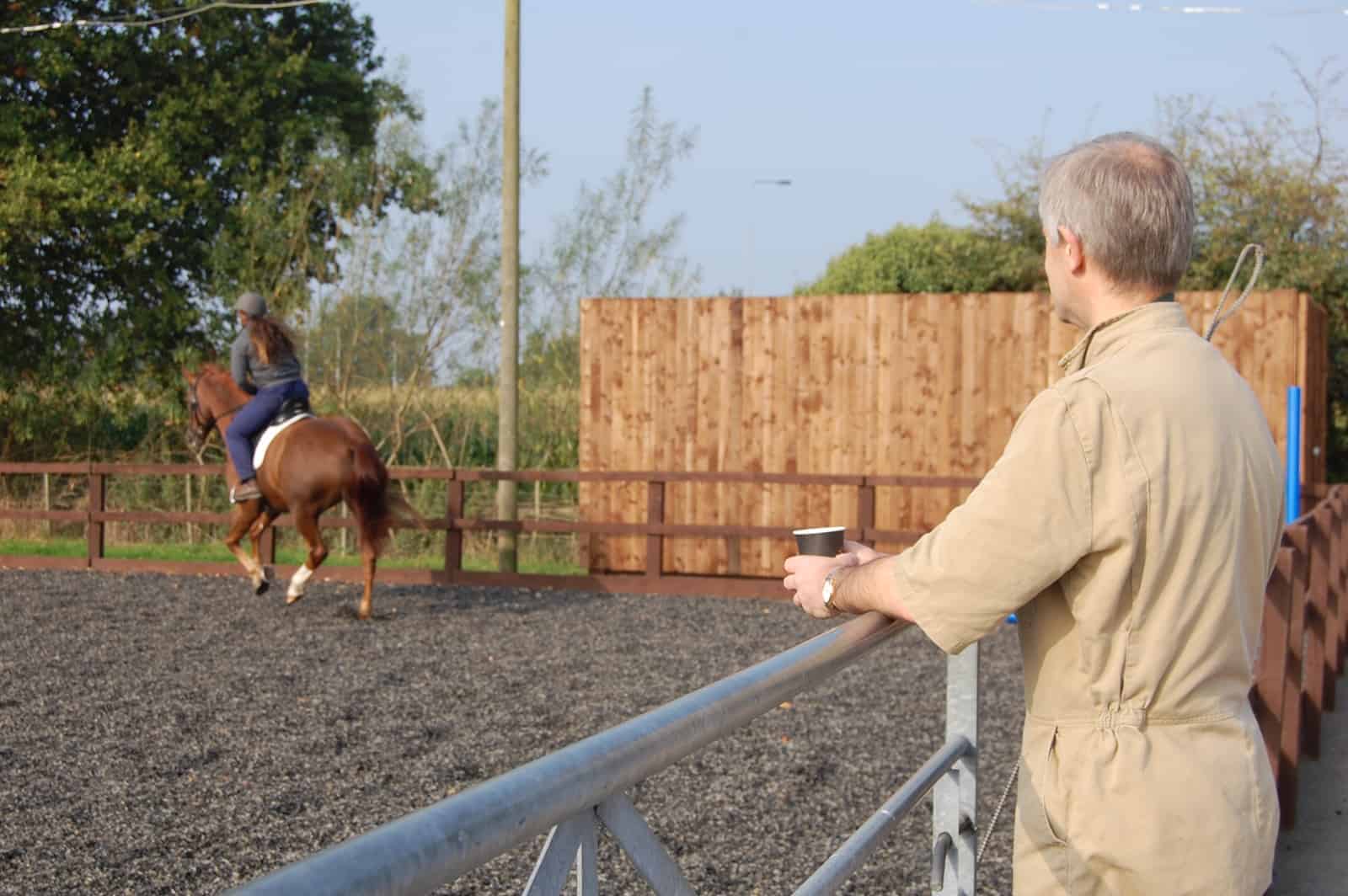
Evaluating a Patient for Lameness
Dr. Richard Stephenson watches Lucy Ireland put a lameness patient through his paces in the clinic's arena. | Photo: Erica Larson, News Editor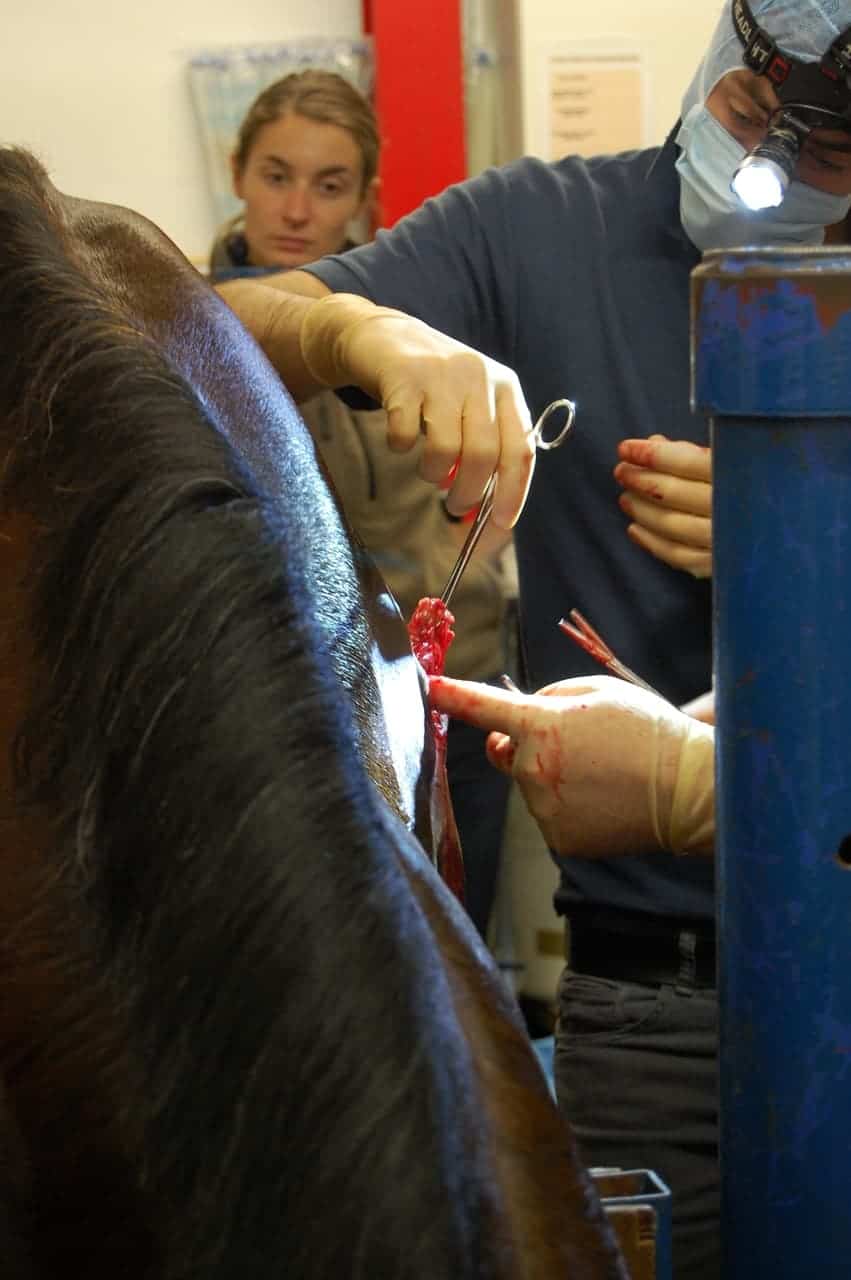
Removing a Mass from a Patient's Shoulder
Drs. Jonathan Withers and Marco Marcatili remove a lump from an older gelding's shoulder. | Photo: Erica Larson, News Editor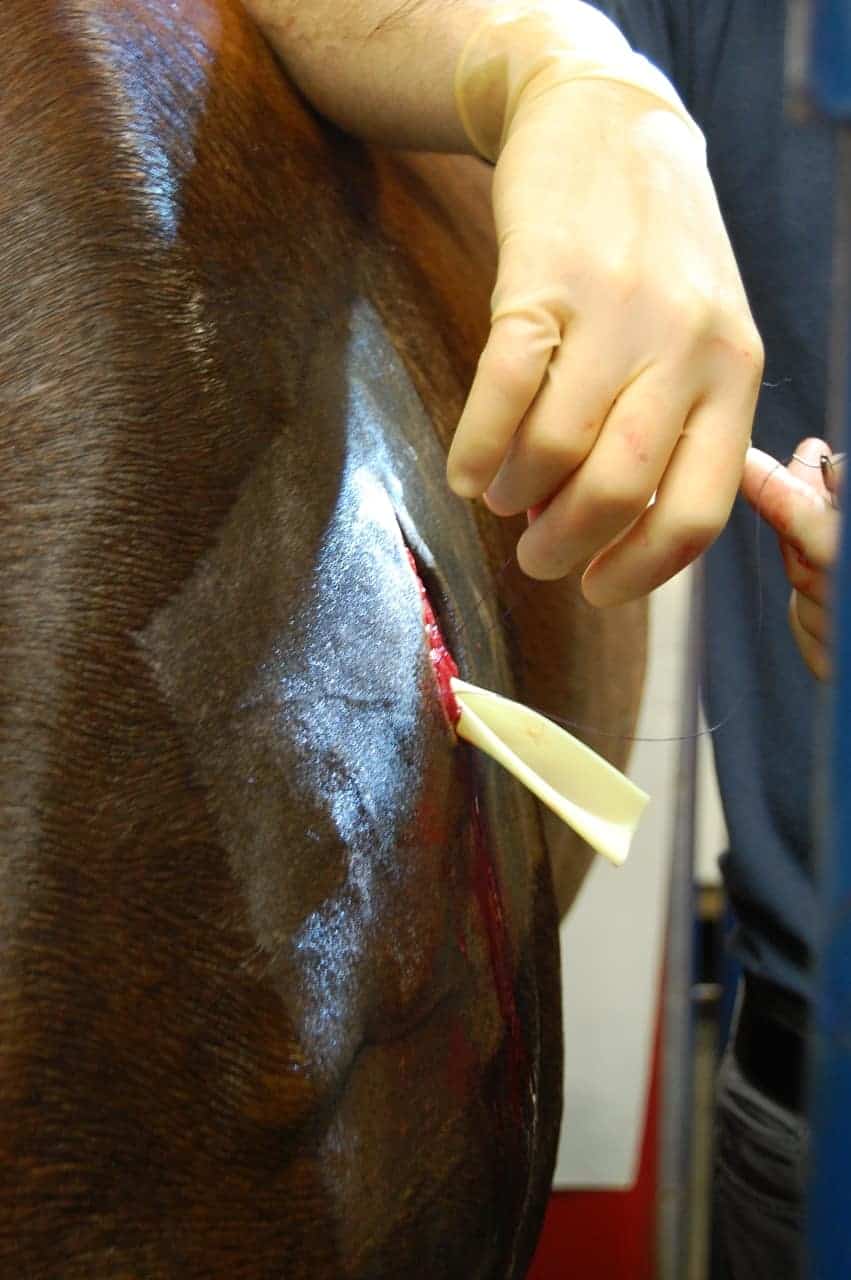
Post-Surgery Preventative Measures
Following the lump removal, they stitch a drain into the incision to prevent fluid build-up. | Photo: Erica Larson, News Editor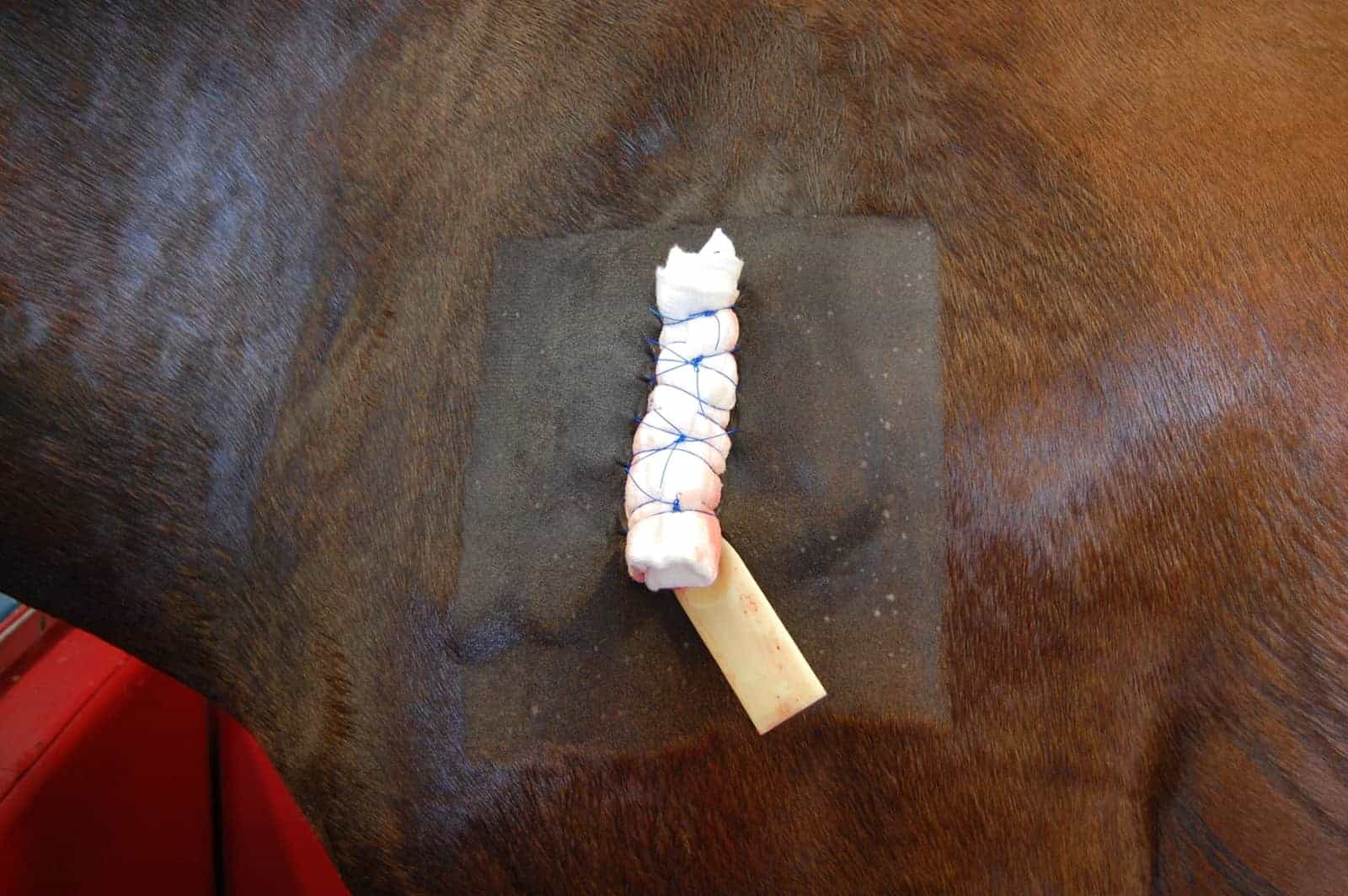
Protective Bandage
One protective bandage later and the horse is ready to return home—once he wakes up from sedation, of course—and await his follow-up visit. | Photo: Erica Larson, News Editor
Biosecurity Procedures
Biosecurity is important at any veterinary establishment, as evidenced by signs posted around Pool House's facilities. | Photo: Erica Larson, News Editor
Neurectomy
Dr. Withers applies sterile bandages to a patient's legs before beginning a neurectomy (which involves removing a piece of the nerve that stimulates the suspensory ligament and alleviating pain). | Photo: Erica Larson, News Editor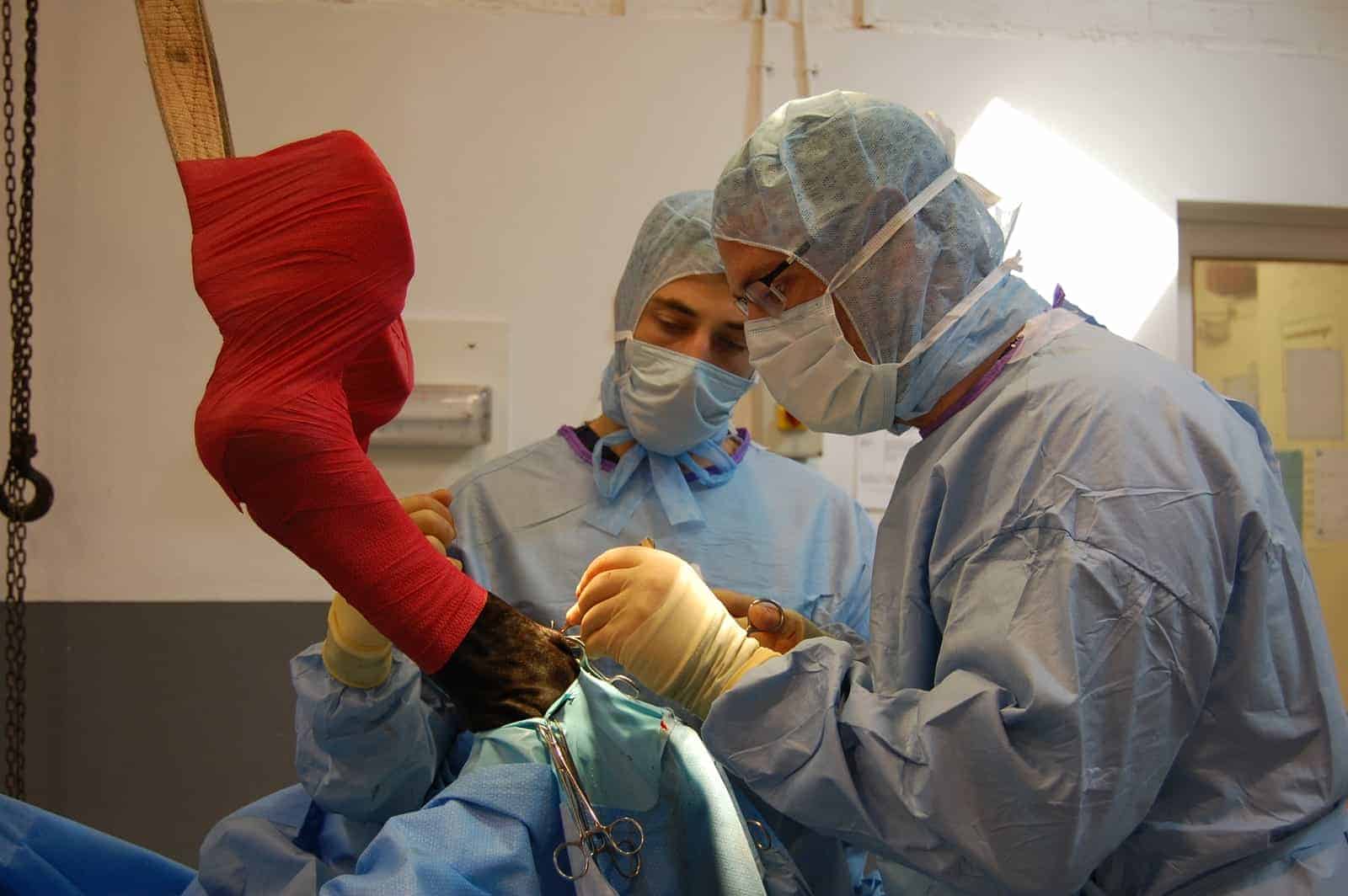
Stitching Up the Incision
Following nerve removal, Dr. Withers stitches the incision up before moving on to the next leg. | Photo: Erica Larson, News Editor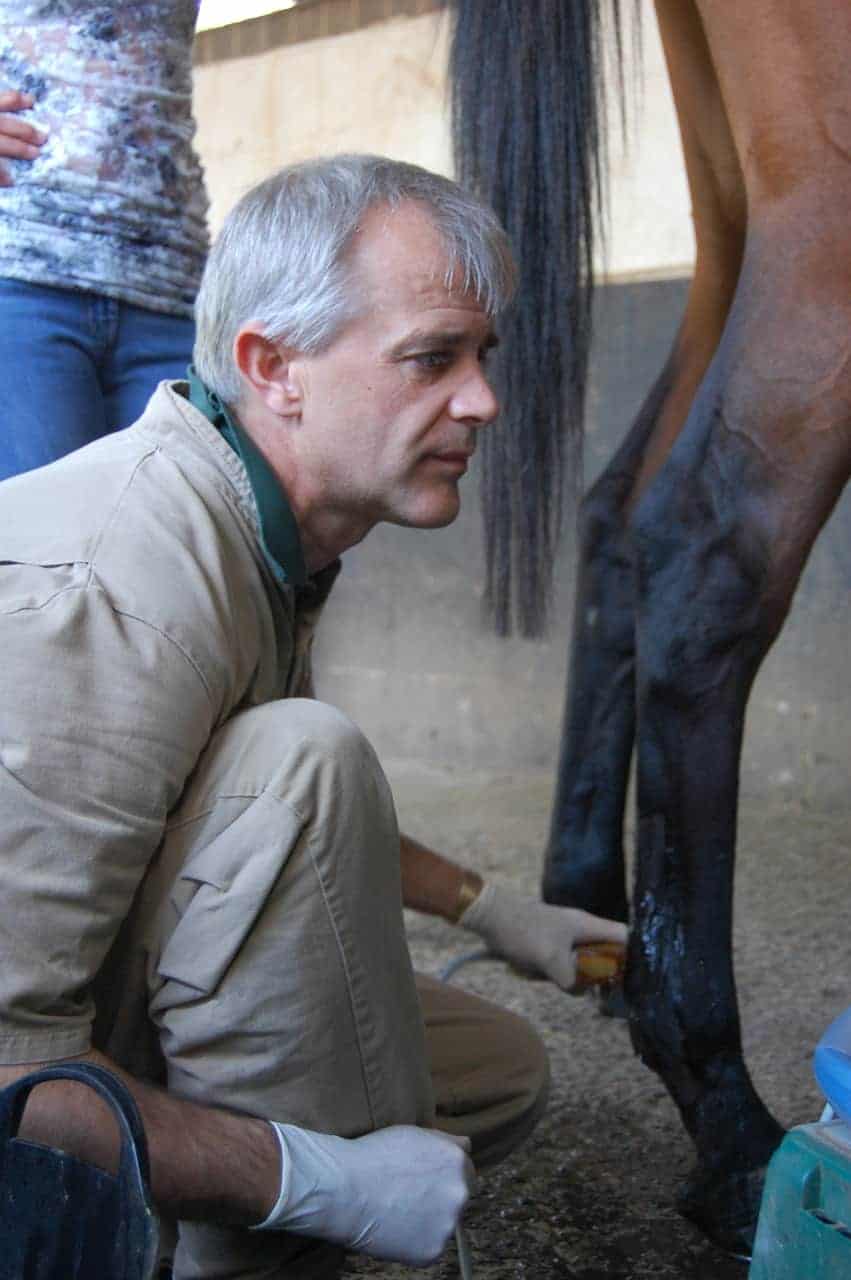
Ultrasounding a Horse with Hind-End Lameness
On a farm call, Dr. Stephenson ultrasounds a horse who'd been lame on his right hind leg for several days. | Photo: Erica Larson, News Editor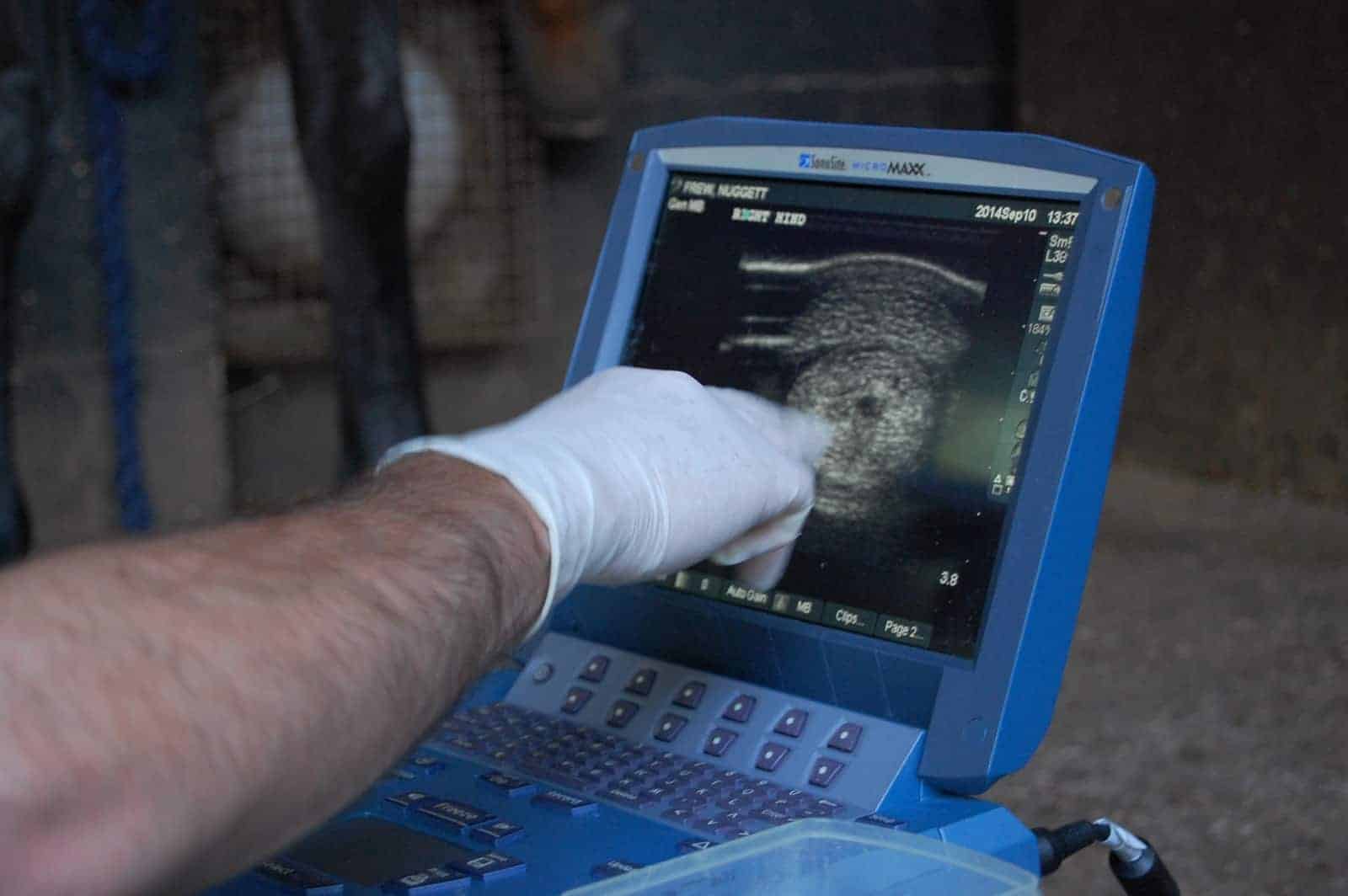
Ultrasound Results
He points out what he's found—a core lesion in the deep digital flexor tendon. | Photo: Erica Larson, News Editor
Share

The Horse: Your Guide To Equine Health Care is an equine publication providing the latest news and information on the health, care, welfare, and management of all equids.
Related Articles
Stay on top of the most recent Horse Health news with


